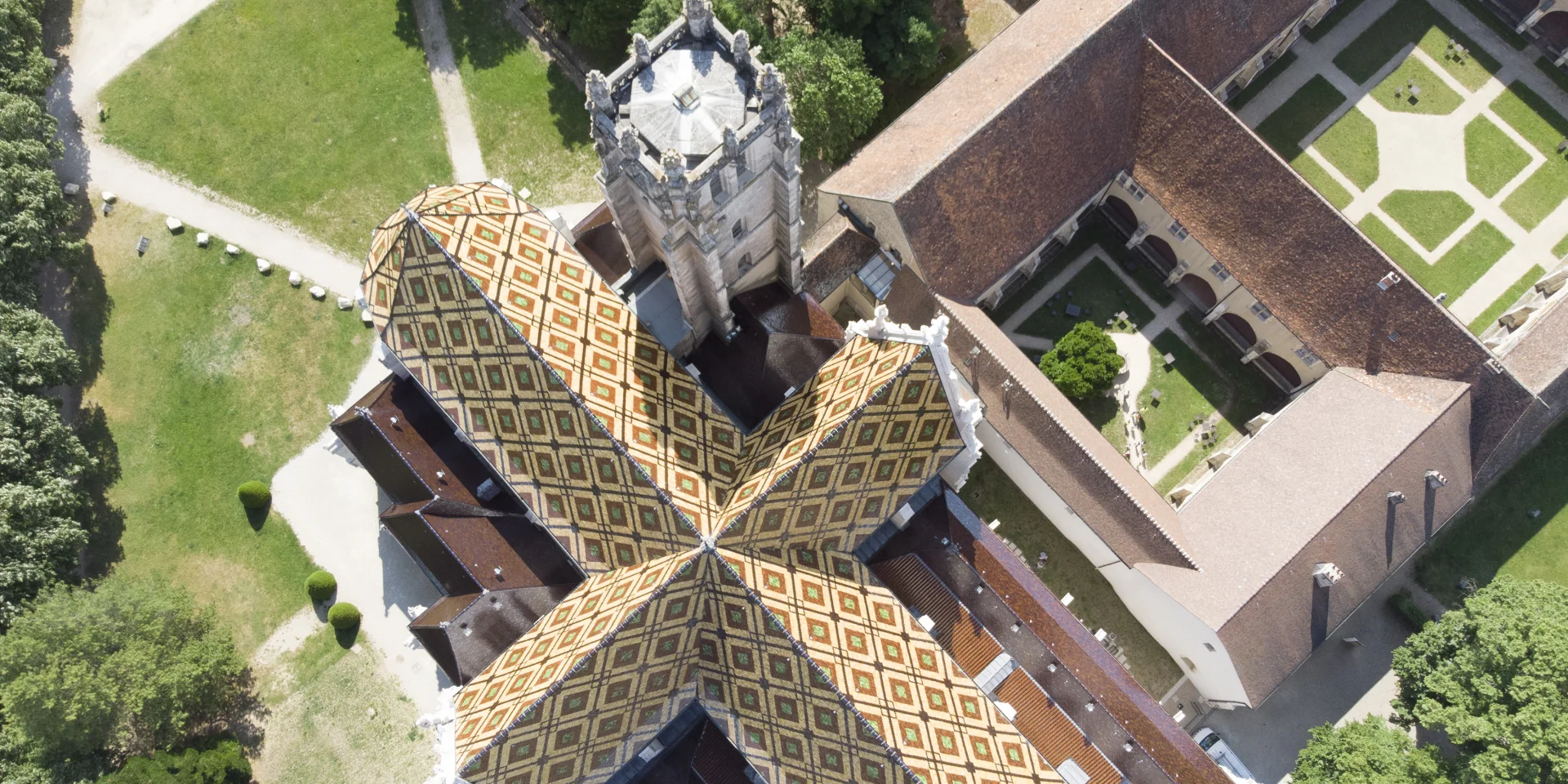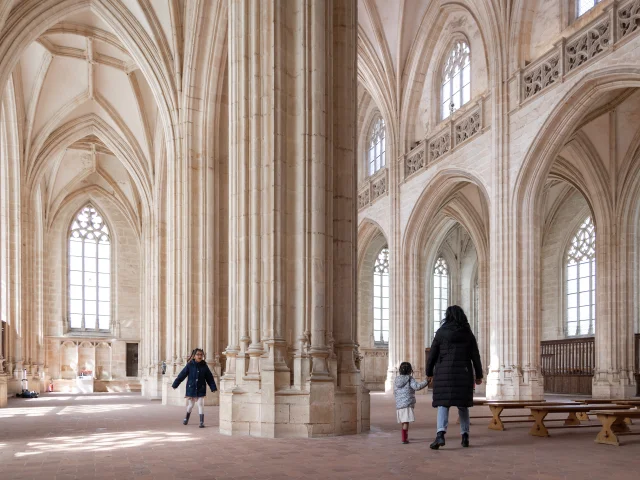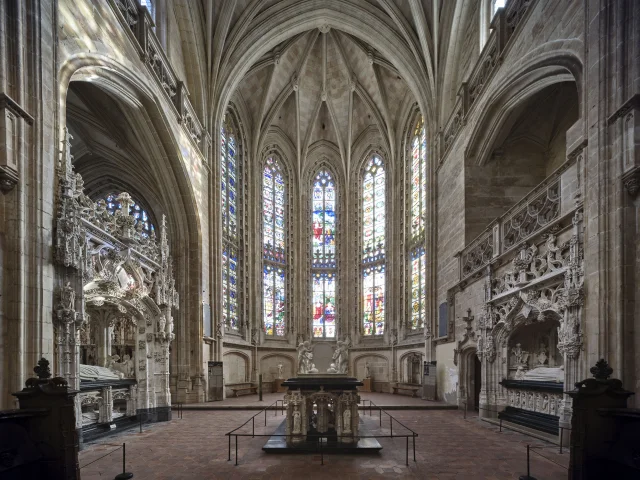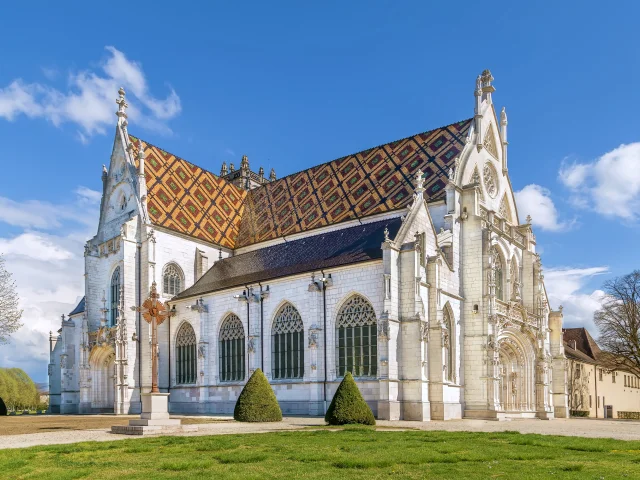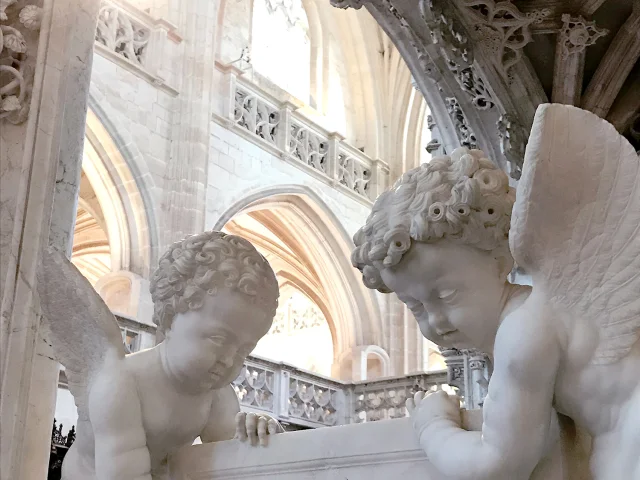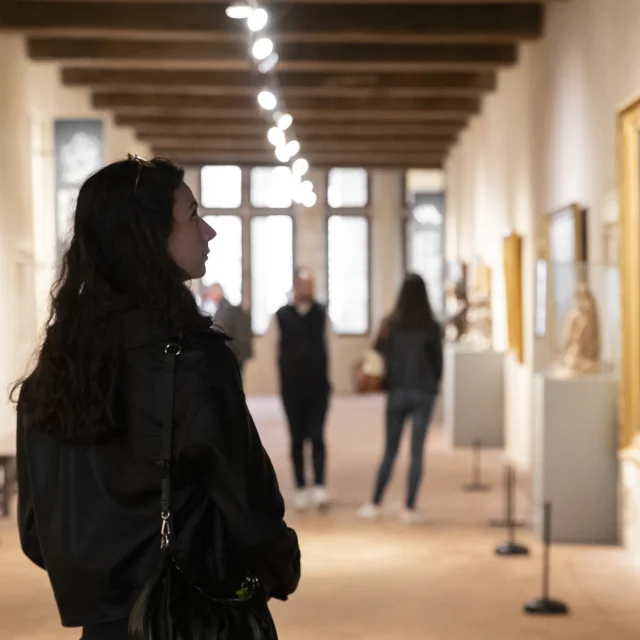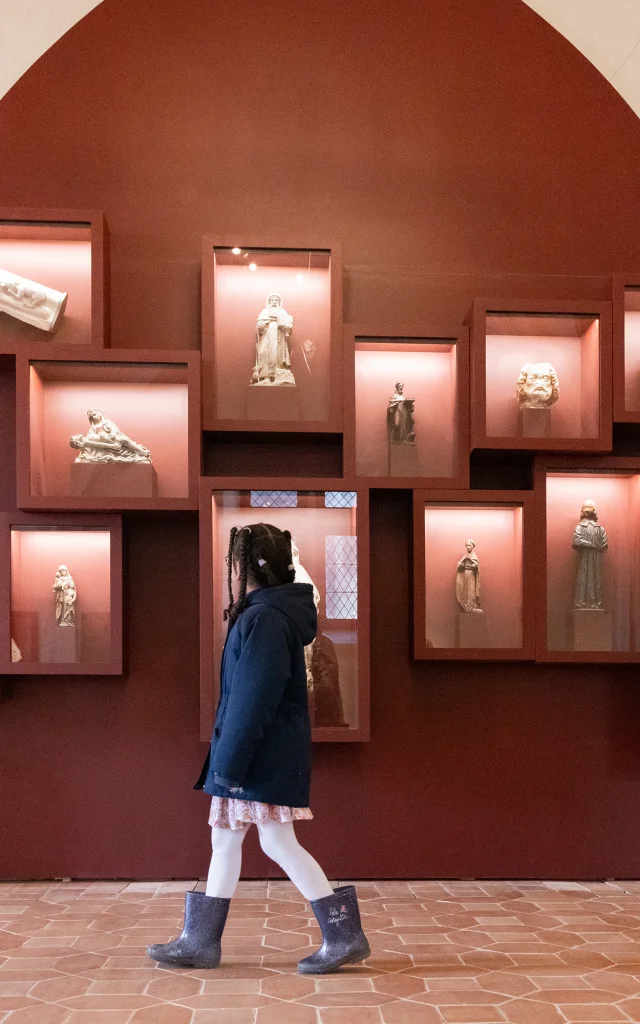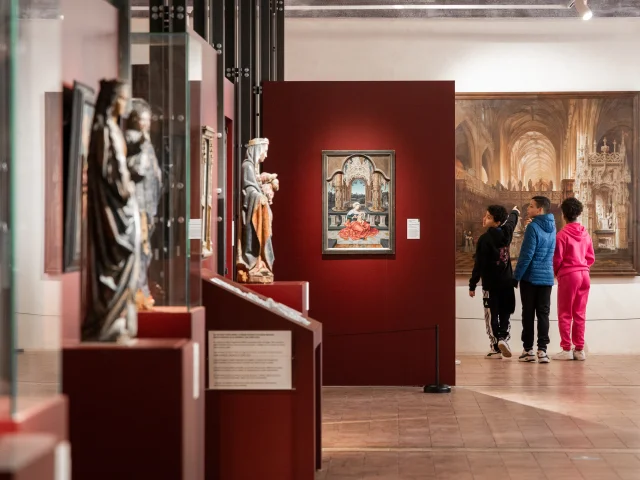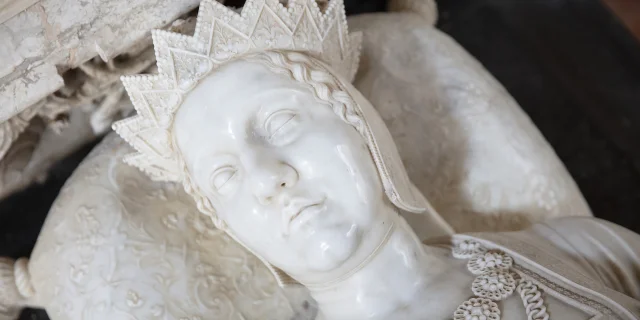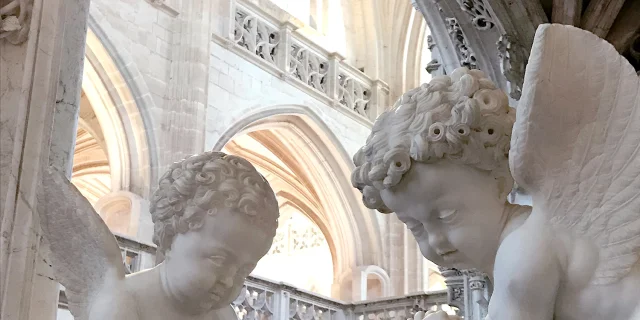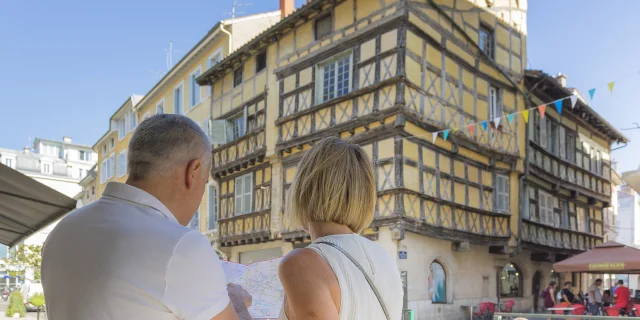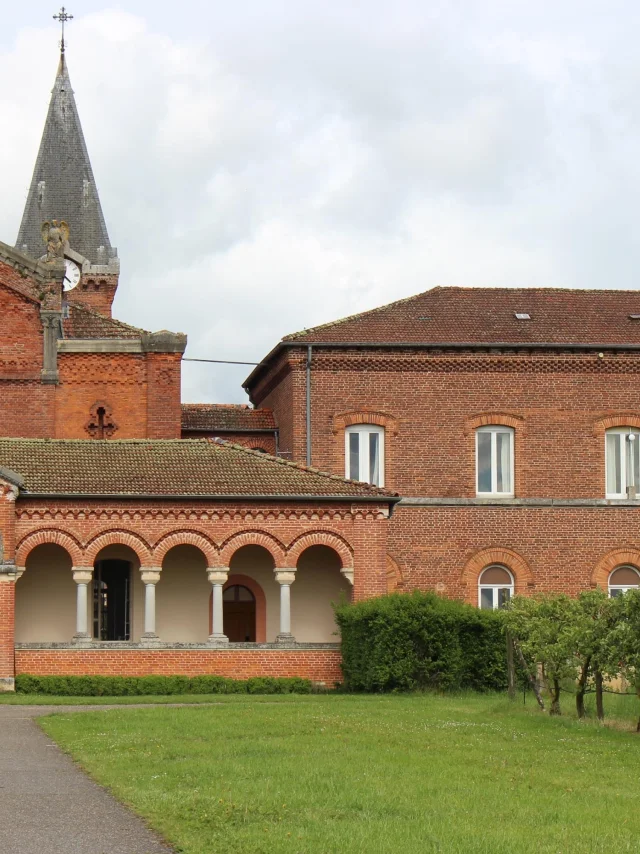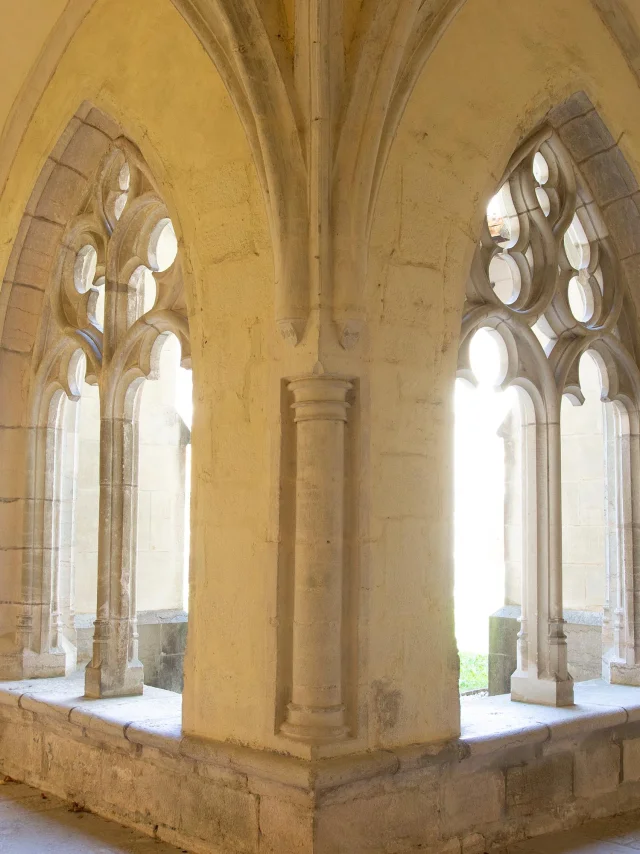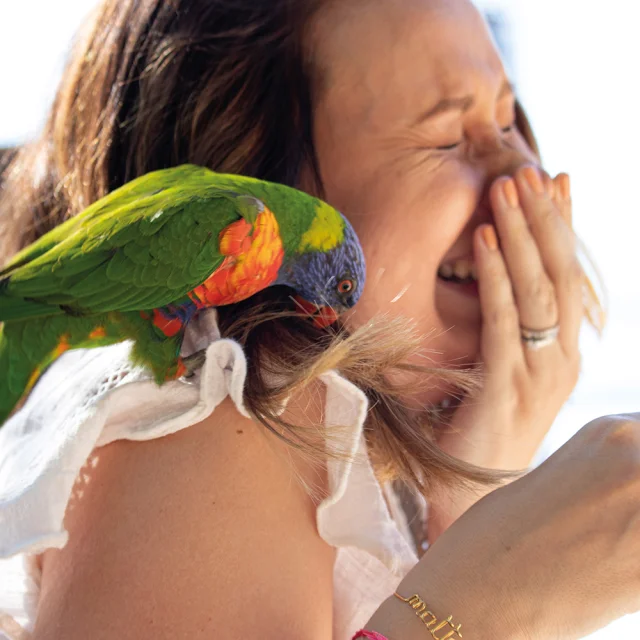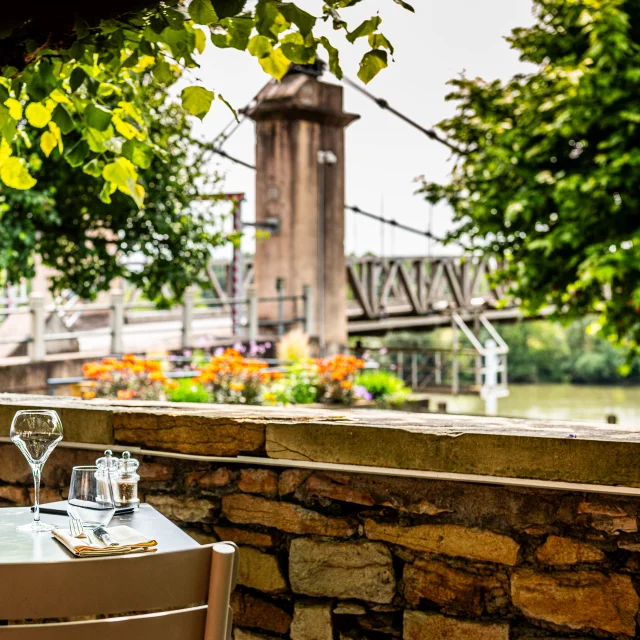Love and beauty
As soon as you arrive, the building with its Burgundian glazed tile roof and delicately carved gables makes a statement. Inside, the magic continues: fine sculptures, delicate stone lacework, fine statues, elaborate stalls… Every detail is important, helping to create the feeling of eternity that grips you in the face of such splendor and balance.
At the center of the mausoleum lies the recumbent body of a man who was dearly loved, mowed down in the prime of life and watched over by the two women who loved him most of all, his mother and his wife Marguerite of Austria. The mausoleum is brimming with hidden meanings to be discovered along the way. Will you be able to see all the omnipresent monograms where the P and M (the initials of the legendary couple) intertwine, decipher their history in the stained glass windows and detect all the signs?
